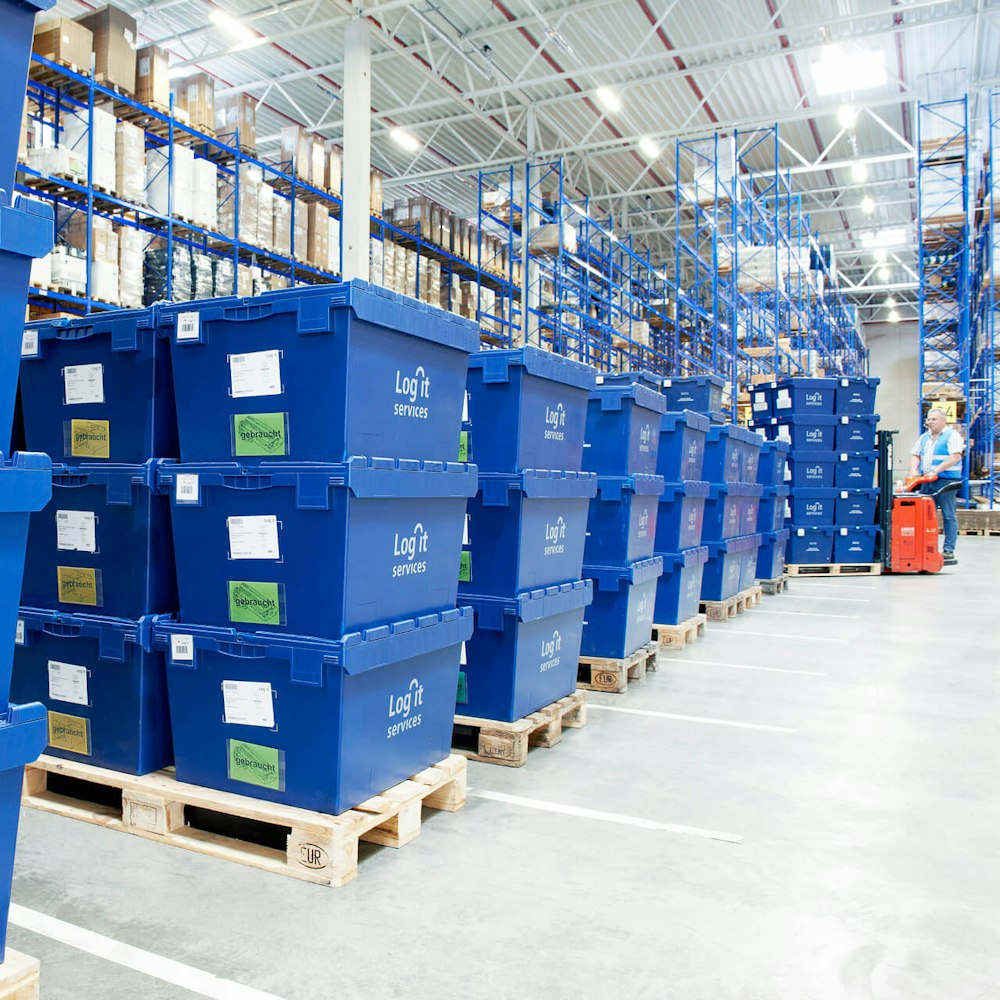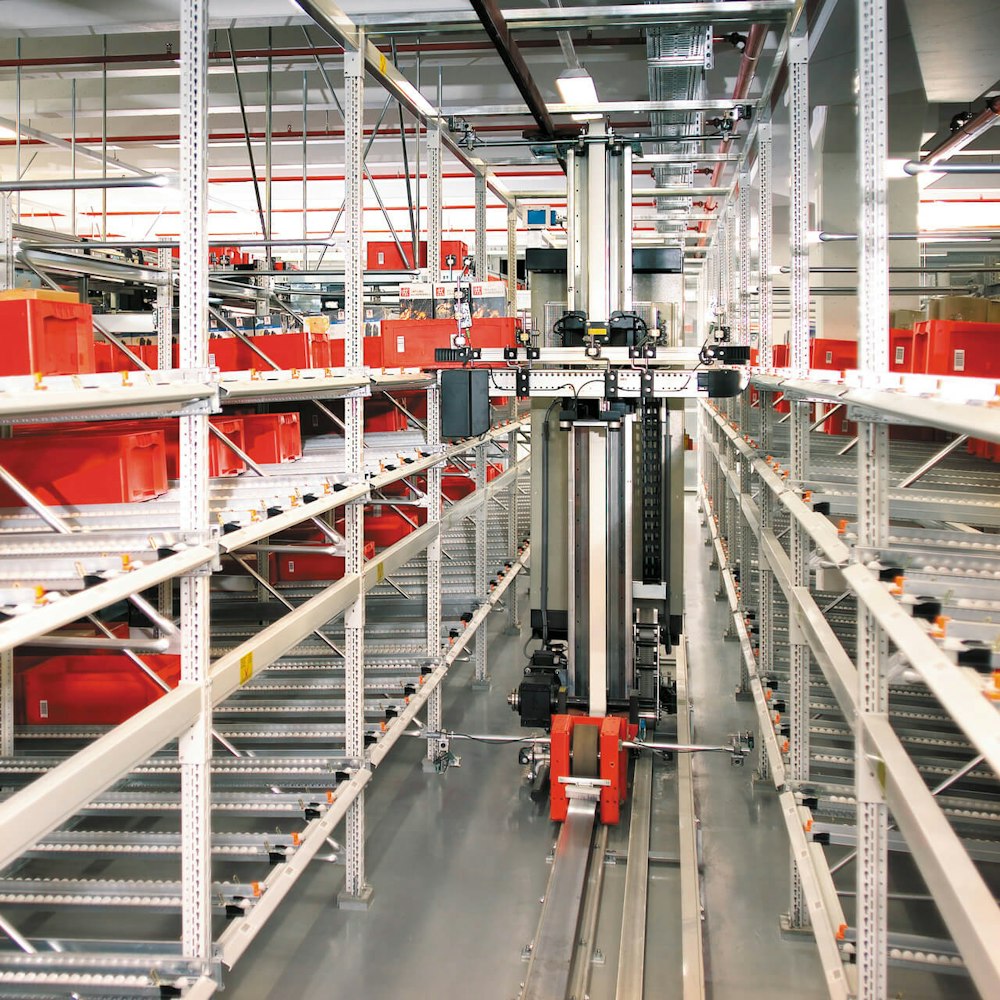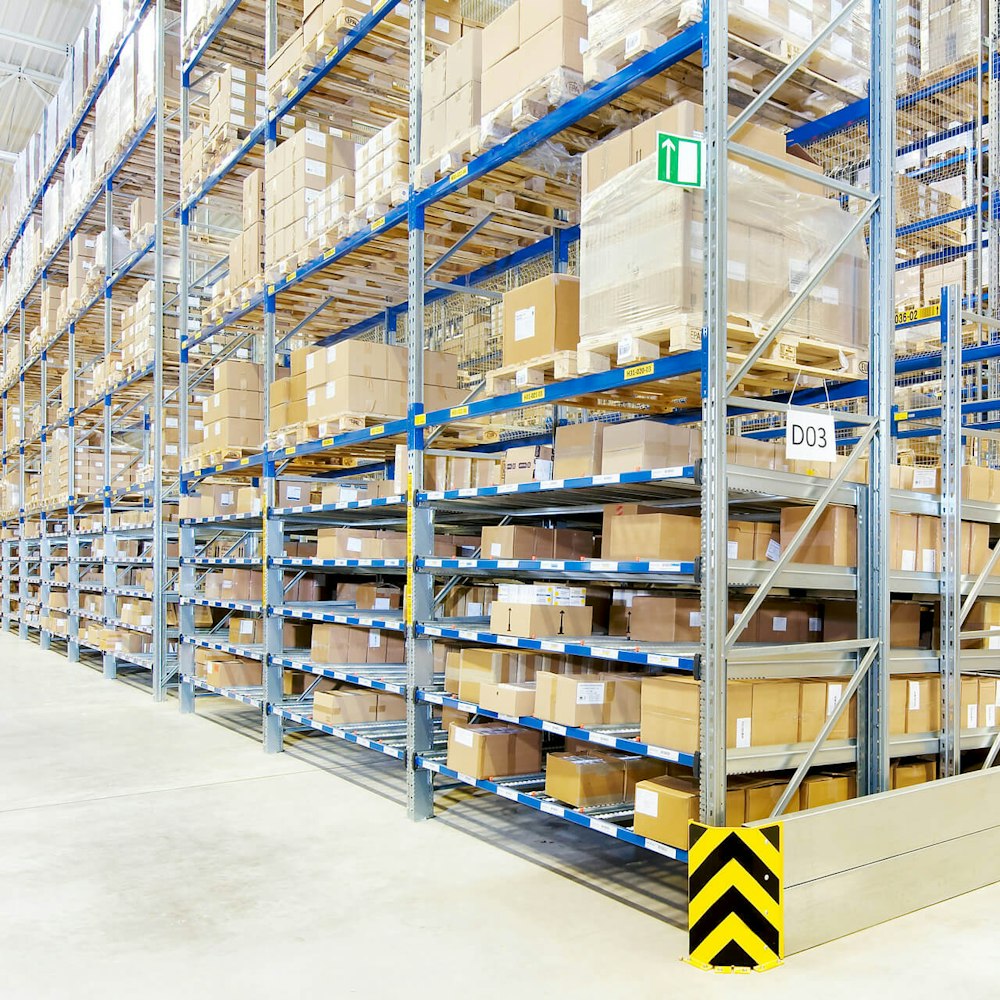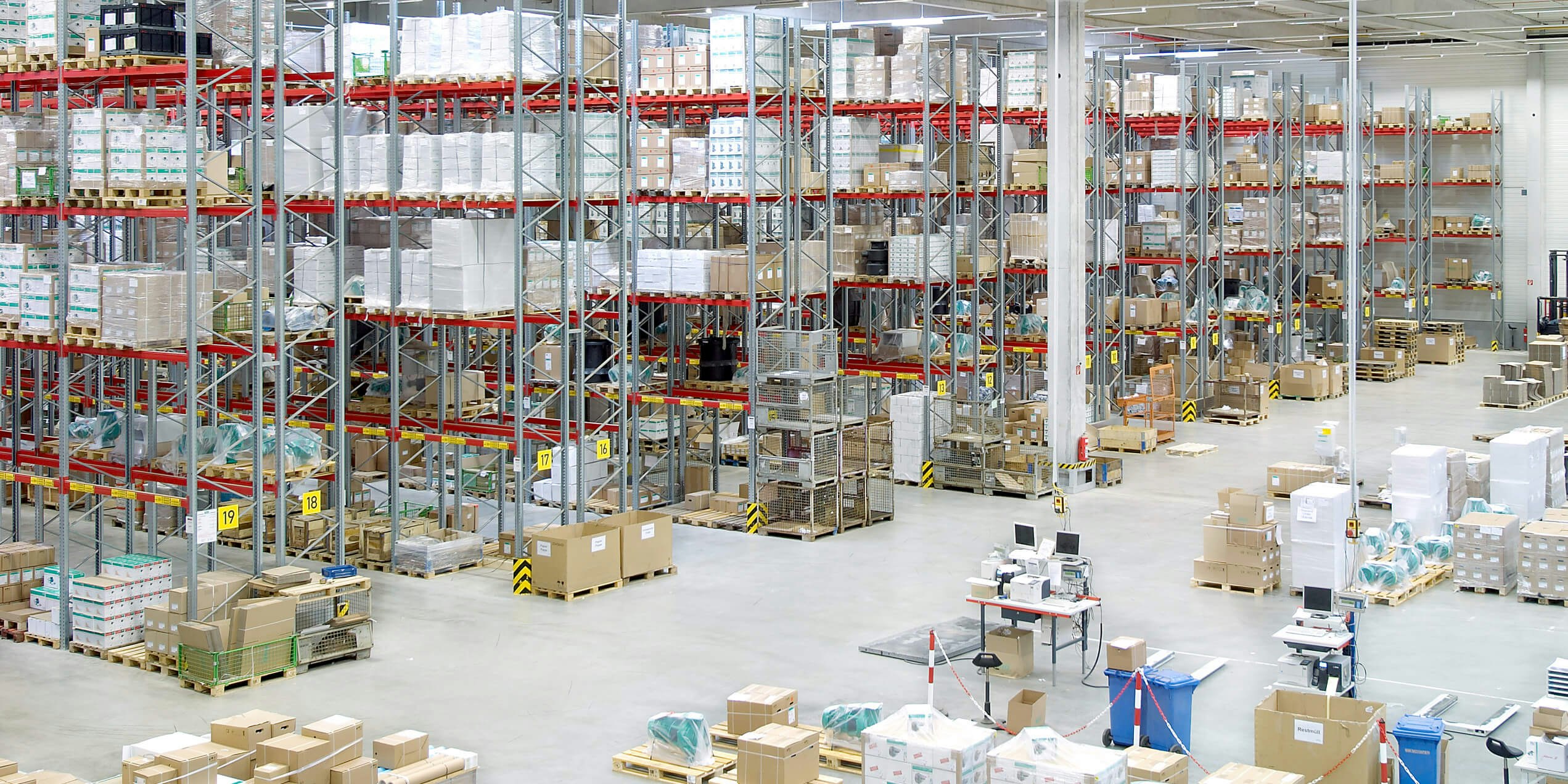Types of storage solutions

Products can be stored differently but which type of storage option is the right one? Modern storage methods are built around different systems –pallets or stillages, racking or shelving, containers or no containers.

Block storage is the term used when stackable crates, boxes or pallets are stacked directly – without shelves – on top of each other or next to each other. The items are therefore placed on the floor and the method consists of several parallel storage and retrieval aisles with a uniform width and length. Within these aisles, units are moved with a forklift truck or hand pallet truck to position and remove the goods. Running in parallel left and right along the storage and retrieval aisles will be several staging columns. These, in turn, consist of one or more provision sites arranged one behind the other, which are marked on the ground. Depending on the stacking capability of the loading units, these provision areas have a uniform width, depth and height.
A corridor runs along the front of the storage and retrieval aisles. These aisles are closed at the rear end so they can only be entered and exited at the front end. The aisle thus connects the storage and retrieval aisles and the base station. The base station is located in the middle of the front end and consists of a buffer for the provision of the removed goods for the downstream area. A path leads from a staging point of an upstream area to the entrance of the warehouse and picking system. In the same way, the system has an exit for the removal of the finished goods.
Typical examples of goods suitable for this purpose are stackable palletised goods, barrels or tyres. Block stacking is relatively inexpensive because there are no additional costs for pallet racking. Block storage thus falls under the category of static storage systems.

Flow racking can be used for goods on pallets or cartons. Depending on the application, the racking is either referred to as pallet flow racking or carton roller shelving. The layout consists of a rectangular one-block storage and picking area. This area is divided into parallel storage aisles, staging areas, conveyor areas and removal aisles, each of which has a uniform width and length. On the staging areas, flow racking is made up of several rack columns, which in turn are made up of stacked channels with uniform widths, heights and depths. Within a channel, the goods are supplied on rollers, the goods roll forward independently due to gravity as the channel has an incline, of usually three to eight degrees. A channel consists of several staging areas arranged one behind the other. With flow racking, very compact storage systems can be built on a small storage area.
A major advantage is that picking and put-away processes are kept apart. Flow racking is loaded from one side and the goods passing through are then removed from the opposite side. Due to the inclination of the rollers, the stored goods (pallets or cartons) are automatically transported from the loading side to the unloading side. Flow racks ensure that the ‘First In, First Out’ principle is followed and that optimum batch monitoring is ensured.

Conventional pallet racking is most commonly used for single depth pallet storage. With this type of racking, each pallet is easily accessible. If the requirements for the warehouse change, these racks can be converted to order picking systems or upgraded at any time with just a few simple steps. Single depth rack storage is therefore a flexible solution with relatively low investment costs.

When planning a layout, double depth rack storage is similar to the layout of a single depth rack storage and picking system. The difference is that the levels each have two stacking positions, one behind the other. With this storage system, for example, two unmixed pallets can be stored one behind the other. This allows four pallets to be stored in each racking aisle. This optimises warehouse volume by eliminating one rack aisle.
5. Carousel
The layout of a carousel storage system consists of an automatic carousel rack and a semi-automatic removal area. The carousel racking is built on staging areas or shelves with a uniform length, width and depth. Arranged one above the other, these form a unit called a shelf column. The shelf gaps hang on wheels in a rail. Additional wheels are often fitted, which are guided by a rail running on the floor and support the shelf gaps from the floor. A carousel rack has several rack gaps hanging next to each other, which are moved according to the principle of a circular conveyor, with only one drive. In the storage and order picking area of the carousel warehouse, several parallel, identical racks are arranged next to each other without taking aisle areas between the racks into account.
At the front of a carousel rack there is a lift system that can accommodate two load units at the same time and thus form the interface between the rack and a continuous conveyor. This conveyor connects the upstream area with the carousel storage system and the racking system with the unloading points. For connection to the lift system, buffer spaces are provided at the front of the shelves.
Which type of storage solution best suits an application? Who better to answer this question than the manufacturer of storage solutions - BITO? Our consulting service, whether by telephone, e-mail or in person at your premises, is guaranteed to find the best individual storage solution for customers. Companies can also take a look at storage systems in our Experience Centre.


